
Heatspreader …
The memory modules are provided on a PCB with two bonded passive heatsinks (heatspreader), which are supposed to enhance RAM cooling also with higher frequencies and/or higher voltages. Thus one achieves on the one hand better overclocking results and on the other hand a longer life-time, whereby Crucial by the way grants lifelong warranty (Limited Lifetime Warranty) for the buyer (all information about manufacturer conditions are of course without guarantee by ocinside.de).
JEDEC and XMP …
Instead of the JEDEC standard values of 1.50 Volt for DDR3 modules, these modules are officially designed for a higher voltage of 1.65 Volt to reach the fast CL8 timinings at DDR3-1600 without errors.
The fast timings and frequencies were programmed as XMP-1600 value (Intel Extreme Memory Profile) in the modules and can be detected on some mainboards like the EPP value (nVidia Enhanced Performance Profile) or the usual SPD value (Serial Presence Detect). If the motherboard supports XMP, the standard timings can be set to these higher frequencies automatically without much knowledge, otherwise one should adjust the correct RAM values manually in the BIOS, in order to get optimal results. Don’t hesitate to ask for help about the correct BIOS setup and the exact values in our forums.
Light Emitting Diodes …
Another feature are the red and green light emitting diodes atop each memory module, which shows the active RAM traffic, to see the activity of the memory modules at any time without any additional software. Close to the pins within the lower range of the PCB are 8 further red and green LEDs integrated to lighting the PC permanently. This is a nice feature for a PC or Mac, but that’s not all, as we will see below.
Here is a view of the top side of the Crucial Ballistix Tracer module:

Here you can see a close view of the small SMD Light Emitting Diodes of the Crucial Ballistix Tracer modules …
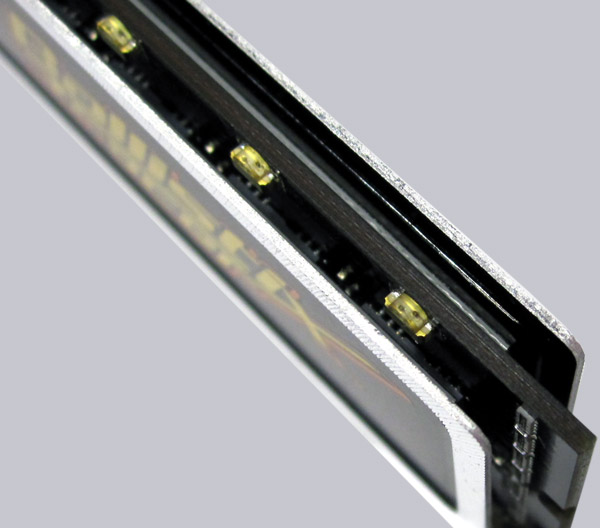
Here is a picture of the Crucial Ballistix Smart Tracer DDR3 modules operating on an ASRock motherboard. The upper and lower LEDs illuminates nearly the whole PC and this give the PC a special touch:
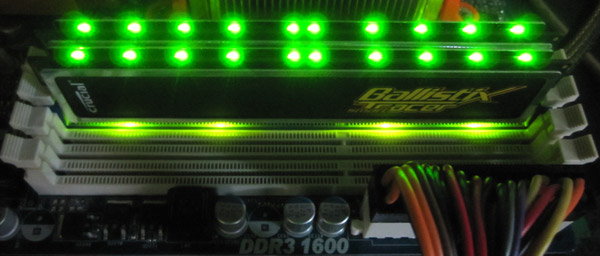
BallistixUtility M.O.D (Memory Overview Display) …
And that is still not all what these Ballistix Tracer Smart modules have to offer. Because Crucial offers a special Ballistix tool for download on their web page, which is a must download for these modules. With this software one can see the SPD data of each module in the first menu …
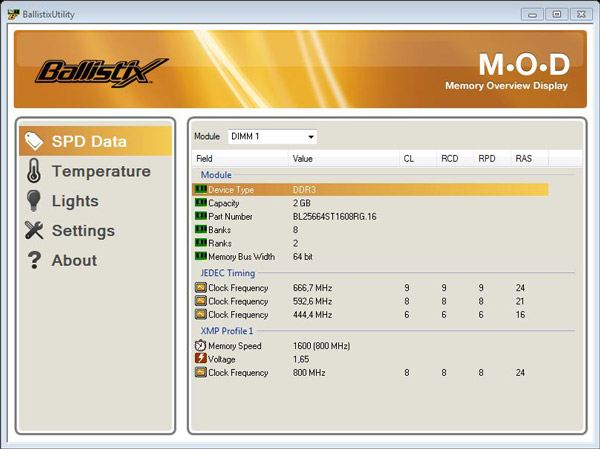
In the second menu one can see the temperature of each memory modules and as diagram and save it in a log file …
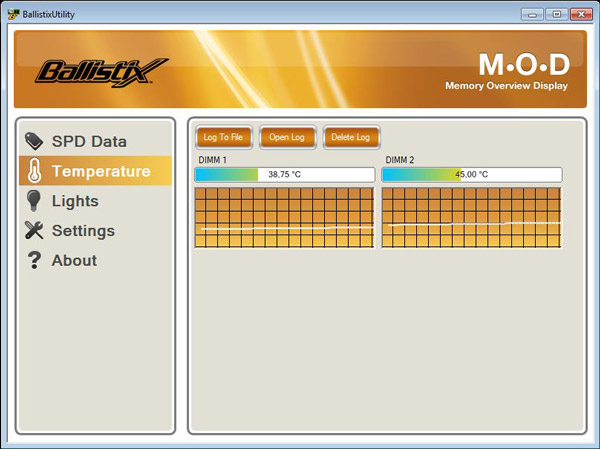
And even the LEDs can be programmed with the software! With Pattern the kind of the activity LEDs can be changed e.g. to Stereodisplay or Lava, etc., with Brightness one can adjust the brightness of the RAM Light Emitting Diodes and with Running/Activity it is possible to change the colors of the upper and lower LED rows …
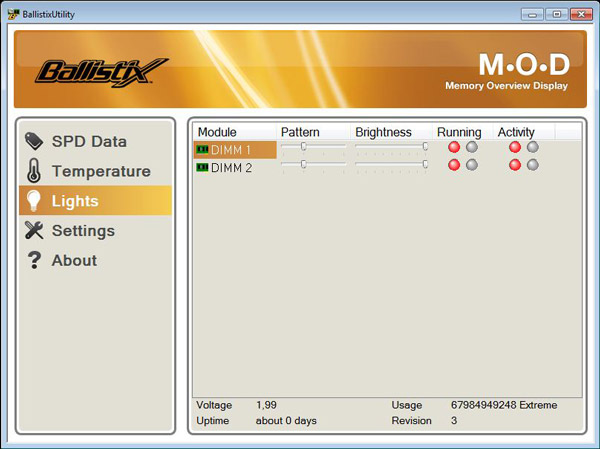
There are also a few little monitoring functions and adjustments of the tool …
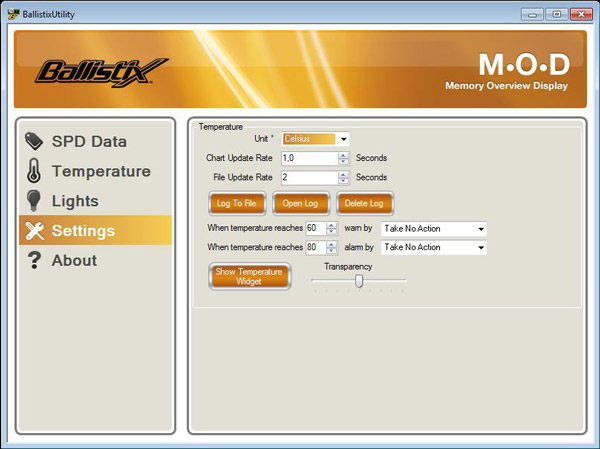
So that one does not have to keep always the Ballistix window opened for temperature monitoring, it offers an additional small Ballistix Temperature Widget, to keep always the temperature in view …
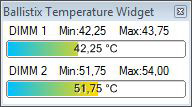
The Ballistix tools succeeded overall well, but could be optimized again in a few points.
Less than 4GB on booting, only 3GB in the BIOS or less than 4GB in the operating system …
It can occur that the memory capacity is only indicated as approx. 3GB instead of the 4GB, because 4GB RAM or any sizes with more than 2GB have to be setup in the BIOS and/or in the OS.Here at ocinside.de is a guide which contains among other things a table, how much RAM each operating system can support. Additionally there are some topics in our forum under hints and cheat, how one can address 4GB or more also with 32-Bit operating systems. Don’t hesitate to ask us in our German or English forum if you need any help.

